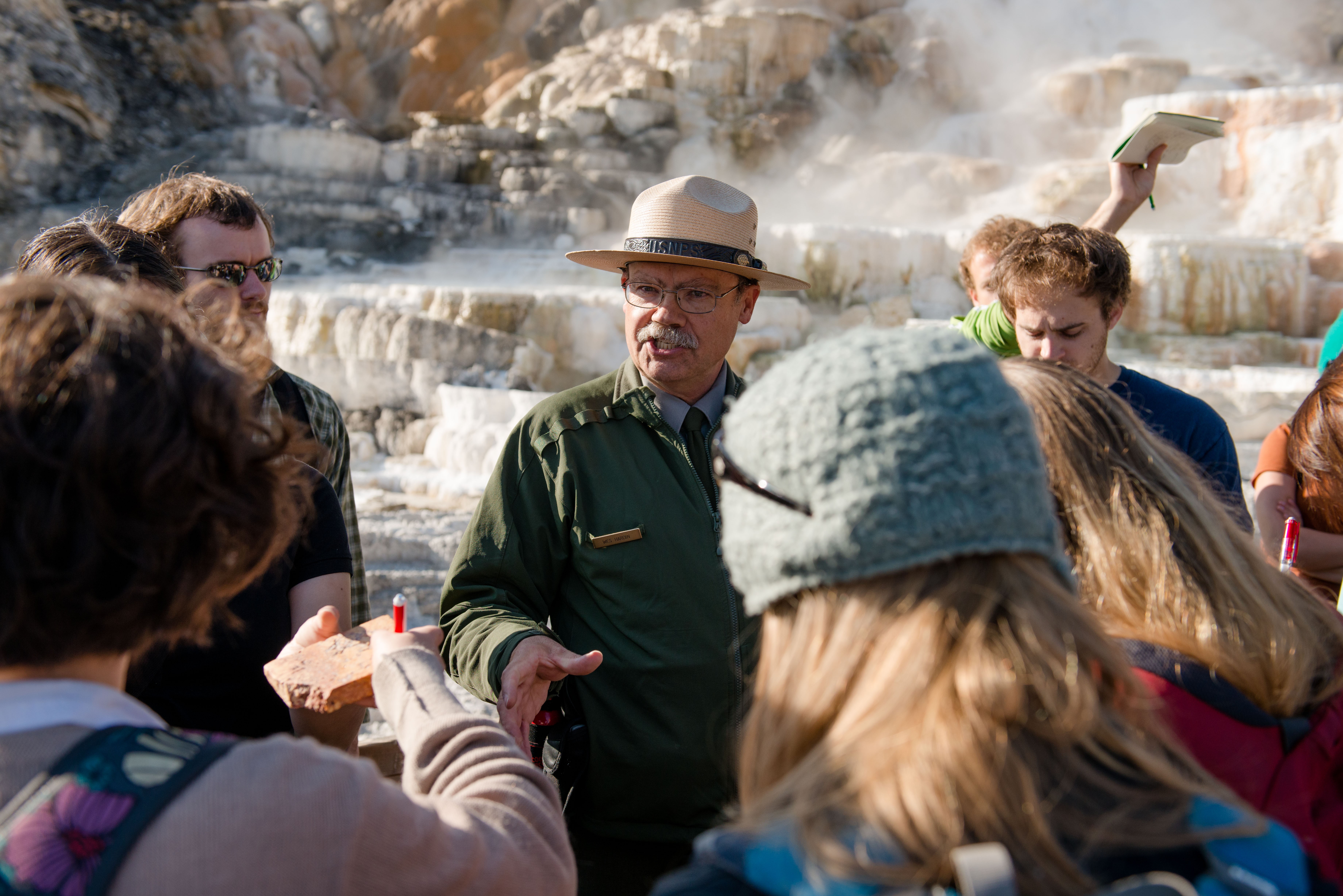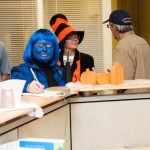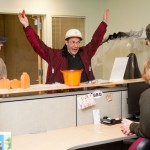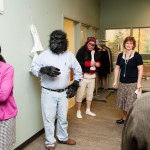
Field report author, Ken Tabbutt.
Editor’s Note: Member of the Faculty, Ken Tabbutt provides the following Field Report from his program’s Fall 2012 trip to Yellowstone.
The upper-division science program, Environmental Analysis, used the first few weeks of Fall quarter to travel through the west in order to study microbiology, hydrogeology, and analytical chemistry in an integrated and applied manner.
The trip followed the path of the Missoula Floods up the Columbia River Gorge, through the scablands and up the Clarks Fork drainage. A week in Yellowstone National Park provided an opportunity to grasp the interconnections between the unique geology, thermal systems and microbiology.

Clyde Barlow and Ken Tabbutt lead their students through Yellowstone National Park–an environment epically rich in both science and artistic beauty. Photograph by Shauna Bittle
Visits to the Berkeley Pit of Butte, Montana and Silver Valley, Idaho focused on the mining history and the physical and biological processes that create acid mine drainage and metal contamination. A final stop at the unusual alkaline lakes of Grand Coulee provided an opportunity for students to sample lake water and identify chemoclines, thermoclines and do alkalinity titrations until the wee hours of the morning.
One Minute Evergreen: Yellowstone

Yellowstone ranger Wes Hardin leads Environmental Analysis students through Mammoth Hot Springs. ** Faculty Ken Tabbutt, Andy Brabban and Clyde Barlow take a group of students through Yellowstone National Park with the program Environmental Analysis on Fri., Sept. 30, 2012. The group was studying the unique geological and microbiotic conditions in the park.


























